Birthday astrology and the doctrine of the humours, Temperament and body health, the soul and its health
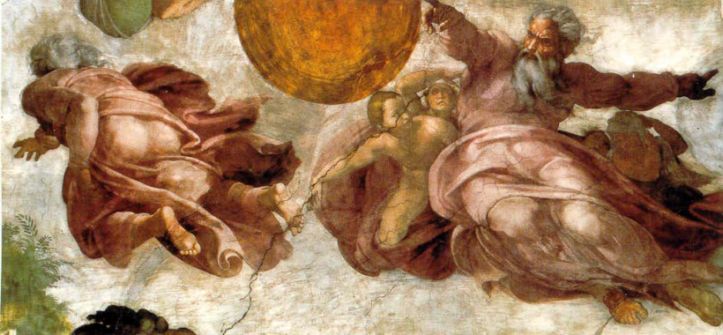
Michelangelo – Creation of the Sun and the Moon
.
Basic qualities, elements and humours
The dissertation concerns the principles referred to the “basic qualities” and the “theory of the elements”. In the ancient world all the things were decomposed into their constitutive elements (fire – air – earth – water), and it is possible to observe then, the dynamic course of the transformation of the basic qualities. Such principles were also used in medicine and in the astrological forecasting techniques of which they were the basis. A wise, masterly and detailed job of application and exploitation of the principles of the theory of the elements and of the doctrine of the humours made it possible for the ancient man to be able to foresee from the configurations of the sky, a whole series of further information: from the time condition to the natural calamities, from the examination of the state of health of the individual to the general epidemiological state, from the political changes to the course of the markets, from the meaningful events in the life of the individuals to the principal occurrences of the peoples.
In the conception of the ancient all that formed part of the field of a sensitive perception (thanks to our physical senses) could be interpreted by the observation of the “lights in the sky”. The archaic astronomy was able to grasp the really mathematical dimension of the most various phenomenons from which a close connection with the life of the living beings could not be separated.
The shining bodies that are observed in the sky are on the one hand the wandering stars, the planets, the Sun and the Moon and on the other hand the non-wandering stars, the constellations (or starry images) which are the groups of stars having a particular nature, encoded and handed down in the course of the millennia. Inside this reality, all that concerns the living beings is connected to phenomenons that are expressed, observable and also measurable, in the all-embracing sky (the ideal heavenly vault, the sky that embraces and contains all the intelligible beings).
The generative principles are the Sun which produces the heat which is origin of all the things and the Moon which generates the primordial dampness present in the sublunary world. The phases that are produced in the movement of the Sun and of the Moon, with the participation of the qualities expressed by all the planets, the stars and all the others new lights that appear in the sky (comets, meteoric swarms, meteors, novas) generate all the variations of heat, damp, cold and dry that cause the change of the state of the time, the succession of the seasons during the year, different constitutions of the human beings and of the other living beings of the animal, vegetable and mineral world.
In a more general sense, the variations of these primordial qualities in the sublunary world (on the earth) cause the generation and the changes of the things existing in nature. The light of the celestial bodies, the variations of this light and the different forms which the celestial bodies assumes, represent the bond between the celestial world and the terrestrial one, between the level of the form and that of the matter.
According to the Aristotelian physics, all that is a part of the corporeal world, is composed of different combinations of four primordial qualities, the heat, the cold, the humidity and the dryness. Among these primordial qualities, the hot-cold couple requires little matter and has a characteristic which is called active or it acts on the bodies endowed with matter. The second humid-dry couple is composed of a lot of matter and has a characteristic which is called passive or it suffers the effect of the heat and of the cold.
The action of the heat unites only things of the same nature while the cold keeps together things of the same and also opposite nature. A damp thing is what is not limited outwardly by its own limits and that is therefore easy to confine itself, a dry thing instead is what has its own well definite limits and that it is difficult to confine itself.
Each primordial quality is present in the matter under the form of combination with another primordial quality. The elements or either the possible combinations among the primordial qualities are only four because the opposite couples hot-cold and dry-humid can not coexist:
.
| FIRE | Hot | Dry |
| AIR | Hot | Humid |
| WATER | Cold | Humid |
| EARTH | Cold | Dry |
.
The action of the light on the primordial matter, in its gradations considered fundamental produces the elements. Therefore, the quantity of light is maximum in the fire, is a little bit more reduced in the air, it decreases further on in the water up to almost fail in the earth.
The elements, because of their material nature, lack of heat and of light originating merely from the celestial spheres: the Sun, the first and principal source of light, illuminates and heats first of all the Moon and then all the other planets that according to their motions and configurations, arouse in the sublunary matter the mixtures of the primordial qualities and the transformations of the elements, through their calorific action. The whole physical world is therefore the result of the presence of the solar light in the matter. The action of the light passes through the simplest matter of the four elements so as to arrive to the more complex one – that of mineral, vegetal and animal bodies in an endless variety of combinations [1].
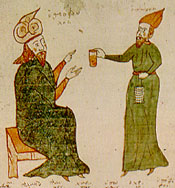 Every thing existing in the world of generation and decay comes from the four elements since they are mixed among them in different quantities and proportions. The relation of mixture of the organic bodies is the temperament or crasis. The body in which the elements are present in the same proportion is equal or balanced. The Arabs, for example, believed that among all the gems, among all the minerals, among all the “simple”, the pearl is balanced because it has a median position between the hot, the cold, the humidity and the dryness. We know that traditionally magic proprieties were attributed to the pearl and preparations were obtained from it just with reference to its balanced composition. From the predominance of one quality upon the others, nine temperaments originate among which one is balanced and eight are not: four of them are simple and four are compound. Finally, the external factors, which are the land in which the man is born, the sex, the habits and the age influence the temperament of the individual. The land, the sex and the age are naturally definable, the habits are not. It is generally believed that the male sex tends to be hot and dry; the female sex tends rather to be cold and humid. As far as the age is concerned, it is analogous to the seasons of the year. When the baby is born he has a very hot and humid nature, as he or she approaches the adulthood the humidity fails and the temperament tends to be hot and dry. In this we find again the correspondence to the qualities inborn in the spring and in the summer. As the human being approaches the old age the temperament tends to be dry and cold. Also in this case the correspondence to the qualities of the autumnal and winter season exists.
Every thing existing in the world of generation and decay comes from the four elements since they are mixed among them in different quantities and proportions. The relation of mixture of the organic bodies is the temperament or crasis. The body in which the elements are present in the same proportion is equal or balanced. The Arabs, for example, believed that among all the gems, among all the minerals, among all the “simple”, the pearl is balanced because it has a median position between the hot, the cold, the humidity and the dryness. We know that traditionally magic proprieties were attributed to the pearl and preparations were obtained from it just with reference to its balanced composition. From the predominance of one quality upon the others, nine temperaments originate among which one is balanced and eight are not: four of them are simple and four are compound. Finally, the external factors, which are the land in which the man is born, the sex, the habits and the age influence the temperament of the individual. The land, the sex and the age are naturally definable, the habits are not. It is generally believed that the male sex tends to be hot and dry; the female sex tends rather to be cold and humid. As far as the age is concerned, it is analogous to the seasons of the year. When the baby is born he has a very hot and humid nature, as he or she approaches the adulthood the humidity fails and the temperament tends to be hot and dry. In this we find again the correspondence to the qualities inborn in the spring and in the summer. As the human being approaches the old age the temperament tends to be dry and cold. Also in this case the correspondence to the qualities of the autumnal and winter season exists.
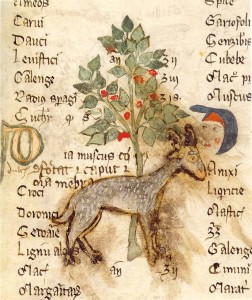 The knowledge of the state of the body for forecast purposes was defined in the terms of philosophy of nature according to an outlook which we find again in all the Indo-European peoples, which get to know about it through the Greek culture, which was familiar to Persians and to Indians and which we find, in different versions, also in other cultures. This conception became part of our cultural heritage until the nineteeenth century, together with the formation of a “doctrinal corpus”of the Hippocratic medicine. In this sphere we distinguish the human temperaments according to the four principal humours. The temperaments are due to the preponderance of one humor in the balancing of the human body and they are called: the sanguine temperament when the hot and humid qualities prevail; the choleric temperament, when the hot and dry qualities prevail; the melancholic one, when the cold and dry qualities prevail; the phlegmatic one, when the cold and the humid qualities prevail:
The knowledge of the state of the body for forecast purposes was defined in the terms of philosophy of nature according to an outlook which we find again in all the Indo-European peoples, which get to know about it through the Greek culture, which was familiar to Persians and to Indians and which we find, in different versions, also in other cultures. This conception became part of our cultural heritage until the nineteeenth century, together with the formation of a “doctrinal corpus”of the Hippocratic medicine. In this sphere we distinguish the human temperaments according to the four principal humours. The temperaments are due to the preponderance of one humor in the balancing of the human body and they are called: the sanguine temperament when the hot and humid qualities prevail; the choleric temperament, when the hot and dry qualities prevail; the melancholic one, when the cold and dry qualities prevail; the phlegmatic one, when the cold and the humid qualities prevail:
.
Phlegm = cold and humid (WATER)
Blood = hot and humid (AIR)
Yellow bile = hot and dry (FIRE)
Black bile = cold and dry (EARTH)
.
The health of the body depends on their right balance, while an excess or the lack of one of the four humours generates the disease. Such unbalances and disproportions dipend directly on the environment in which the man lives and which changes its own quality continually according to the cycle of the sunlight during the year:
.
winter = cold and humid (WATER) phlegm
spring = hot and humid (AIR) blood
summer = hot and dry (FIRE) yellow bile
autumn = cold and dry (EARTH) black bile
.
The four elements are directly connected with the seasons and with the bodily humours, as well as with everything that lives in the sublunar world.
.
| The places of the elements | The places of the qualities |
| EARTH Saturn The autumnal quadrant of the zodiac and In the diurnal rotation from the setting to the lower culmination | DRY Saturn, Mars From the summer solstice to the winter solstice From the upper culmination to the lower one |
| WATER Venus The winter quadrant of the zodiac and In the day from the lower culmination to the rising | COLD Saturn, Venus From the autumnal equinox to the vernal one From the setting to the rising |
| AIR Jupiter The vernal quadrant of the zodiac and In the day from the rising to the upper culmination | HUMID Jupiter, Venus From the winter solstice to the summer one From the lower to the upper culmination |
| FIRE Mars The summer quadrant of the zodiac and In the day from the upper culmination to the setting | HOT Jupiter, Mars From the vernal equinox to the autumnal one From the rising to the setting |
.
.
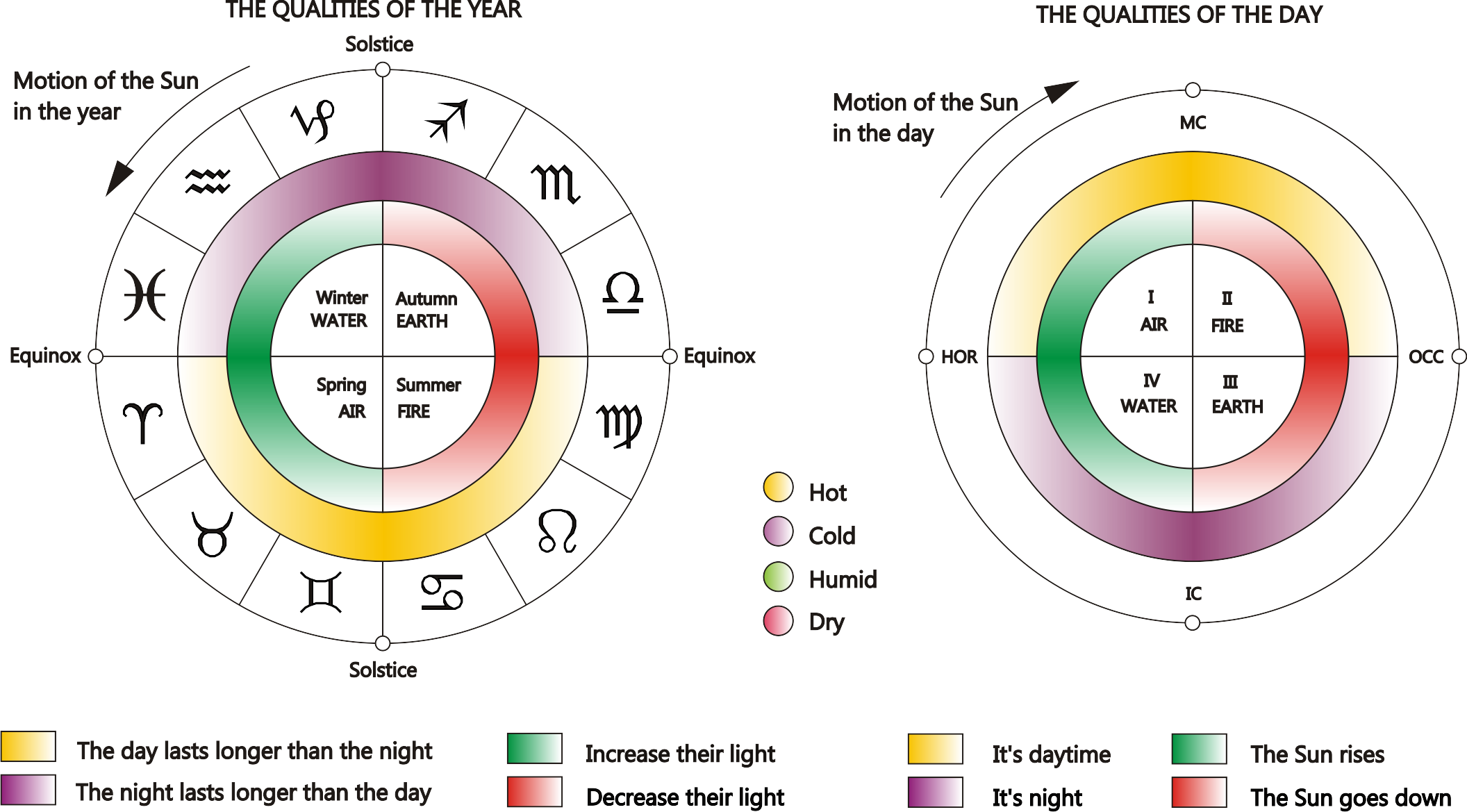
.
| With reference to their nature all the stars that… | |
| increase their light, are oriental | moisten |
| decrease their light, are occidental | dry up |
| are in their luminous fullness | warm up |
| are deprived of their shining emanation | cool |
.
The root causes of the mixture of the qualities
The new Moons and the full Moons, the circuit of the Sun and of the Moon in the zodiac and in the hourly motion agitate the area of the elements giving rise to new generations of both simple bodies, and mixed bodies, and minerals, plants and sentient animals.
As far as the type of these generations is concerned, it is determined by other stars. With the expression “by other stars” we mean every luminous celestial body besides the Sun and the Moon, therefore not only planets, but also fixed stars, comets, every new luminous phenomenon.
All of them act according to the specific quality of their luminous colour which is reducible to the chromatic range of the visible planets. The elements are the simplest part of the compound body, they are simple since their substance is homogeneous and its parts are similar. This is the case of fire, air, water and earth. In this meaning even the gems and the minerals look simple. The elements can be divided into three types:
- direct, the elementary particles;
- medial, the four humours;
- remote, the primordial elements.
.
The primordial elements are defined as the hot, the cold, the humidity and the dryness, yet these attributes does not mean the qualities themselves, but the substances in which these qualities are expressed to the highest degree.
.
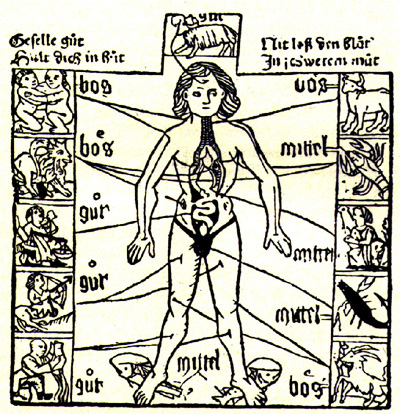
Manuscript – anatomical man
.
Humours
The humours are the medial or secondary elements.All the living and blood bodies have been created by the four humours: blood, phlegm, yellow bile and black bile. They are called medial because they originate from the primordial elements (the Arabs call them“the sons of the elements”) and they form organs and tissues of the body. Every humour is therefore connected with one element and with one organ:
.
| ELEMENT | HUMOUR | VIRTUE | SEAT | DOWNFLOW | AGE |
| Air | Blood | hot-humid | Heart | Nose | 14 |
| Fire | Yellow bile | hot-dry | Liver-stomach | Ears | 28 |
| Earth | Black bile | cold-dry | Spleen | Eyes | 42 |
| Water | Phlegm | cold-humid | Brain-bladder | Mouth | 80 |
.
This table is part of the late Hippocratic tradition in which a humour corresponds to the elements, and this humour determines a virtue, its seat and its downflow (or the place of the discharge of the humour). For example, the blood is connected with the air because of its hot-humid virtue; the blood has its seat in the heart and its downflow in the nose. The ages are those which form part of the tradition and mean that at the age of 14 the hot-humid quality of the body starts to be strong, at the age of 28 the hot-dry quality, at the age of 42 the cold-dry quality and so on. The liver, the spleen, the heart and the brain have a privileged role because they are considered the main seats of the four humours.
.
The genesis of the humours
The reasoning at the basis of the genesis of the humours is very interesting. When the thinnest and the most liquid part of the food, the chyle gets to the liver, the natural heat changes it through fermentation into four humours. In this process of heating the cold and humid part is changed into the nature of phlegm (which is like blood that has not matured yet because the component of heat is scarce), the hot and humid part is changed into blood (considered the temperate part par excellence) and in a progressive increase of heat the yellow and the black bile are produced. It is an irreversible process because the phlegm becomes blood by maturation which is permitted by decoction (from the term decoctio = maturation), then the yellow bile is produced from the blood when the heat has increased to the extent that it dries up the humour and makes it thin. Finally, when the heat increases some more the yellow bile becomes black by inflammation.
It is possible to suppose an analogy with different components of the wine must in which we distinguish the foam that appears on the surface, an earthy substance which falls down to at the bottom and a watery part. From the fermentation of these various parts, once the most watery part has evaporated the wine is produced. We will call the phlegm of the wine the non-fermented must, its melancholy or black bile the earthy and indigestible substance, while its blood is the watery and purified humour which always remains in the wine. But the wine itself is the hottest humour and acts like the yellow bile [2].
.
Natural and unnatural humours
Blood. It is produced in the liver from the juice of the digested food and has a sweet taste. If in the liver there is a high degree of heat and dryness the blood thickens and becomes turbid.
If humidity and coldness predominates the blood is thin, watery and light. Moreover, if in the liver there is excessive cold, the colour of the blood tends to be white, but when the yellow bile is mixed with blood it assumes pure red colour.
Phlegm. It is produced in the liver. It is a non mature humour (humor semicoctus) and gives off an inadequate heat since it is generated by a humid and cold nature. It is typical of his nature to be a cold, humid and tasteless humour and when it meets an intense natural heat it changes into blood.
In his natural form it is cold and humid, it has a white colour, a fluid substance, and is almost tasteless. It is generated in the liver. It is necessarily present in the blood, whose fervour tempers its cold. Because of its humidity it is useful to the connection of the parts of the body and it tempers the sanguine humour before it reaches and feeds the tissues with the lymphatic temperament.
Unnatural states. They are of four types depending on the mixture with other humours. The phlegm mixed together with the black bile, the phlegma acetosum, becomes acid and of cold-dry nature; mixed together with the yellow bile becomes the phlegma salsum, hot-dry; when it takes part to the nature of the blood, considered the temperate humour, it becomes the phlegma dulce. Among the unnatural states there is the phlegma vitreum which is an intense humour, very cold, humid and thick and which can not change in blood. Because of their characteristics the salsum and the vitreum turn out to be particularly pathogenic.
Yellow bile. In its natural form it represents the foam of the blood. Once it has been formed in the liver or it circulates with the blood or it passes to the gall bladder. The circulating part allows the blood to feed some tissues and organs, it makes the blood thinner so that it circulates in the smallest ducts of the body. The function of the part which is in the gall bladder is to eliminate the residues of food and it stimulates the intestinal muscles. Therefore it warms up the stomach and the intestine since its most important functions are: a) to purify the intestine from the phlegm; b) to help the stomach to digest the food.
Unnatural states. There are of four types: the cholera citrina (the citrine cholera) which is due to the mixture with the phlegm and is hotter and harmful than others; the cholera vitellina (the vitelline cholera), because it has the colour of an egg yolk and is due to the mixture with the thicker phlegm. Both of these types arise from the liver; the cholera porrina seu prasina is generated in the stomach, has the colour of the leek and is produced by the combustion of the cholera vitellina; the cholera aeruginosa is generated in the stomach, is absolutely deprived of humidity and is extremely poisonous. It has the colour of verdigris and is produced by the combustion of the cholera porrina.
Black bile. In its natural form it is the sediment of blood. It is called the black humour (melaina cholê). It is produced in the liver and it is divided into two parts: one enters in blood and another in the spleen. The first one contributes to the nourishment of the hardest parts of the body, such as the bones and the cartilages and gives density and consistency to the blood; the other one which gets into the spleen is not necessary to the blood anymore. It purifies the body, its bitter taste irritates the pit of the stomach and it stimulates appetite.
The unnatural state of the black bile is called black bile in the exact meaning of the term and has an acid taste and is hot and biting. Another state arises from the combustion of the yellow bile, it is extremely acid and it feeds the most 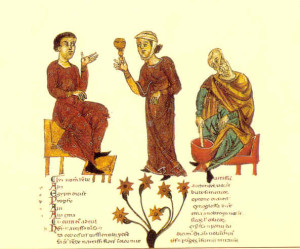 malignant diseases such as cancer, the elephantiasis, the tumours.
malignant diseases such as cancer, the elephantiasis, the tumours.
The medicine of those times, on the basis of the information drawn from the temperament faced the diagnosis and the treatment of the diseases in a way that we should define today homeopathic and allopathic in the meantime.Once the lack or the excess of a certain humour had been understood, the treatment consisted, according to the cases, of a therapy of support of the allopatic medicine and/or of the support of the homeophatic remedy. With the advantages deriving from the current technological advance, however, this unitary outlook on various systems and apparatuses of the human organism turns out to be valid and extremely useful. The pathological phenomenons were also divided into “hot diseases”, which included the inflammatory phenomenons caused by an excess of heat in the body or in a certain organ (which lead to the growth and to the tumescence or the swelling of the part), and into “cold diseases”, which included all the phenomenons that had an obstructive character caused by an excess of cold humour in the body or in the organ: this made the diagnosis and the choice of the most suitable treatment easier for the doctor.
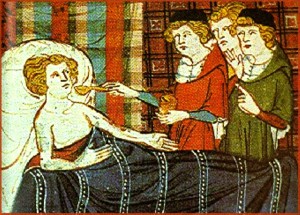 The therapy was supplied after having considered the particular costitution of the temperament and the “natural humour” which was attributed to every organ. Then, the predisposition to certain pathologies because of the basic temperament was taken into account. For example, a bigger propensity to obstructive processes or processes including the loss of nimbleness, or to the formation of the solid residues (the formation of stones), or to the increasing phenomemons of inflammation and swelling (tumescences, haematomas, edemas).
The therapy was supplied after having considered the particular costitution of the temperament and the “natural humour” which was attributed to every organ. Then, the predisposition to certain pathologies because of the basic temperament was taken into account. For example, a bigger propensity to obstructive processes or processes including the loss of nimbleness, or to the formation of the solid residues (the formation of stones), or to the increasing phenomemons of inflammation and swelling (tumescences, haematomas, edemas).
.
Connection among the humours
The four humours represent different degrees of the process of decoction: assimilation – maturation. It is an irreversible process since the assimilated food can not return to the original raw state.
The phlegm changes into blood thanks to the action of the natural heat, but the blood can not change into phlegm.
The blood turns into yellow bile when a strong heat lightens and reduces it, but the yellow bile can not change either into blood or into phlegm.
The yellow bile turns into black bile when a strong heat burning it, dries it up, but the black bile can not change either into the yellow one or into blood or into phlegm.
When a given humour predominates on the body as a whole or in an organ of the body whether because of quantity or because of quality, it has the faculty of giving rise to a disease which corresponds to it. Similarly, the absence or the scarsity of a given humour leads to a specific illness. Finally, if there is an excess of a given humour so that it fills the organs, it smothers the innate heat and leads to death [3].
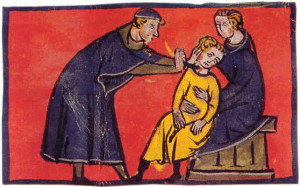 Medieval miniature of neck operation
Medieval miniature of neck operation
The connection we have just seen represents a first cycle which gets from the phlegm to the black bile and a second cycle which gets from the blood to the phlegm. These are two cycles in which the beginning takes place in two different moments. In the same way, if we consider that the year begins from the vernal equinox is like saying that we start with the blood, or if we say that the year starts from the winter solstice, therefore it is like saying that we start with the phlegm.
The winter solstice marks the moment of the year from which the luminous dilatation which represents the primordial humidity that comes out from the phlegm begins again. Since the vernal equinox the phlegm matures, is warmed up and becomes blood.
The creative virtue of the vernal equinox is connected to the creative virtue of the blood which is considered the temperate humour par excellence of the human body. However the blood would not exist if the phlegm was not produced and therefore the real beginning of the year is with the winter solstice.
Between these two beginnings there is the same connection existing between the conception and the birth, and it is like the relation that exists between sowing a plant and seeing it grow. The winter, with Saturn, is the season of the seed and of the semen. In winter the stomachs are hot because they preserve the semen. Since the stomach is hot the necessity of nourishment of the man is bigger and the swallowed substances are digested more easily. In summer the stomach becomes colder and it digests the swallowed substances with more difficulty [4].
In the activity of agriculture it was a general concept to refer to the observation of certain stars like Sirius, Aldebaran, Antares. These are stars that shine a lot and which have a particular proximity to the declination of the celestial equator and that’s why it was considered that some moments of big warm or of big cold and consequently of big thermal variation were caused by these stars in the moment in which the Sun reached their declination. In particular, the moment of their heliacal rising or setting forecasted a variation of weather condition.
For example, the Mars/Jupiter nature bringing big sultriness and dryness was attributed to the star of Sirius. In the same way, the heliacal setting of Aldebaran of the group of Pleiades, a star having the Mars/Venus nature and considered particularly humid, marked the beginning of winter and of the rainy season (this phenomenon is produced towards the middle of November at medium latitudes).
While in the research of diseases, inside various constellations, clear stars and dark stars were distinguished according to their easy or difficult visual resolution. Some stars visible with difficulty of which exist several lists in the literature, were connected, in accordance with their particular pathogenic nature, to the diseases of some organs of the body (visual disorders, heart diseases, liver diseases and so on) and were examined with the aid of indications of the harmful configurations of the planets and of the luminaries at the moment of birth.
.
Conclusions
As we can notice, this way of observing the natural phenomenons, besides helping us to better understand the basis of many astrological techniques and the language of the ancient astrology, concerns a valuable work of individuation of the universal principles that regard the biological, physical world and are still valid today in spite of the advances achieved in the medical and scientifical field. For this reason it may be important to recover these knowledges that derive from the theoretical level but, with the necessary experience, are observable and verifiable in the forecasting experience and in fields apparently distant among them.
According to what has already been mentioned several times, among the subjects of research of general nature or which concern the human communities, these principles of the basic qualities of the elements are further applied in various contexts enriching the cognitive panorama with valuable elements which come from different fields: from the weather forecast to the epidemiological state, from the forecast of the cataclysms to the political commotions in the human societies. Moreover when we examine the natal chart of the individual, starting with characteristics of the physical body, the application of the doctrine of humours supplies us the summary of the health conditions and allows to follow the course of possible diseases; it allows to give an opinion on the psychic and spiritual qualities and in general on the main events of the man’s life.
.
.
Bibliography
Albumasar (Abû Ma’shar Ja’far ibn Muhammad al Balkhî), Albumasaris de revolutionibus nativitatum edit D. Pingree, Lipsiae 1968.
Antioco di Atene, Excepta, CCAG 8/3 104-119.
Claudio Tolemeo, Tetrabiblos, a cura di F.E. Robbins, Loeb 1940, rist 1980; edizione italiana a cura di S. Feraboli, Le previsioni astrologiche, Milano 1985
Placido Titi, Tabulae primi mobilis cum thesibus ad theoricen et canonibus ad praxin additis in rerum demonstrationem et supputationem exemplum triginta clarissimorum natalium thematibus, authore D. Placido de Titis perusino olivetano, P. Frambotti, Patavii 1657.
Placido Titi, De diebus decretoriis at aegrorum decubitu ad iuvandaml praeclaram Artisi Medicae Professionem iuxta Summorum Pontificum et Sacri Concilii Tridentini induktum, Epitome Astrosophica, Physicis maxime rationibus, deinde Galeni, Aristotelis et Ptolemaei praeceptis contexta a D. Placido de Titis Perusino Olivetano in Almo Tycinensi Gymnasio Mathematicarum Professore publice exhibita. Cum LX Exemplis apud gravissimos Authores inventis. Tomus primus, ex officina Ioannis Andreae Magrij in via Nova, Ticini Regii 1660. Tomus secundus (Cum L Natalium Exemplis partim apud gravissimos Authores inventis, partim ab eruditorum manu traditis) ex officina Ioannis Ghidini, Ticini Regii 1665.
Placido Titi, Phsiomathematica sive Coelestis Philosophia naturalibus hucusque desideratis ostensa principiis. Auctore D. Placido de Titis Perusino Olivetanae Congregationis Monacho. Cum nuperrimisi ad Placidianam doctrinam additamentis, excerptis ex III libro Astronomicarum rerum praemittendarum ad futuram Astrologiam Italicum, a Cursino Francobacci et Africano Scirota Romano, in hac secunda editione ad operis calcem oppositis. Ex Typographia Fr. Vigoni, Mediolani 1675. Gerolamo Cardano, Opera Omnia tomus V (Astronomica, Astrologica, Onirocritica) Lugduni 1663. (Johnson Reprint Co., New York and London 1967).
Retorio, De planetarum natura ac vi, CCAG 7 213ss.
Gerolamo Vitali, Lexicon Mathematicum, astronomicum geometricum, hoc est Rerum omnium ad utramque immo et ad omnem fere Mathesim quomodocumque spectantium, Collectio et explicatio. Adjecta brevi novorum Theorematum expensione, verborumque exoticorum dilucidatione ut non injuria Disciplinarum omnium Mathematicarum summa, et Promptuarium dici possit. Auctore Hieronymo Vitali Capuano Clerico Regulari vulgo Theatino. Parisiis, ex officina L. Billaine 1668.
Giuseppe Bezza, Commento al primo libro della Tetrabiblos di Claudio Tolemeo, Con una nuova traduzione e le interpretazioni dei maggiori commentatori, Milano 1992.
Giuseppe Bezza, Arcana Mundi, Milano 1995.
R.H. Allen, Star names and their meanings, New York 1899.
Robert DeLuce, Complete method of prediction from genethliac astrology, according to the western systems, 1935.
.
___________________________________________________________________
Notes
[1] ”In the de caelo Aristotle shows that of two primary types of movement, the circular is peculiar to the sky while the straight-lined movement is peculiar to the simple sublunary bodies. Among these bodies those which are light move upwards, those which are heavy move downwards. The completely light body is the fire, completely heavy is the earth and the universe can not exist without the fire and the earth: the physical body has to be visible and tangible, the first condition is performed by the fire, the second by the earth; the intermediary elements between the fire and the earth are the air and the water.
In the Aristotelian physics the bodies can undergo four kinds of changes: the increase and the diminution of the volume, the alteration of the quality without the change of the nature, the change of the nature which involves the destruction of the pre-existent substance and the production of the new substance and the mixture of two reacting bodies that produces a body which has intermediate properties. Yet, all the bodies act ones upon others by means of a contact and alter on the strength of their tangible qualities and of the contrarieties concerning them.
Then, Aristotle lists the opposite qualities in pairs: hot-cold; dry-humid,heavy-light, hard-soft, sticky-friable, rough-smooth, thick-thin, next he eliminates the heaviness and the lightness as they are neither active nor passive and can not change each other.All the others, except the pair hot-cold which is irreducible, break down and reduce to the humidity and to the dryness; the qualities that reduce to the humidity are:the thinness, the stickiness, the softness, the smoothness; to the dryness: the thickness, the friability, the hardness, the roughness. Therefore , it is called damp (or fluid) what is not limited outwardly by its own limits and that is easy to confine itself; dry (or solid) what is clearly limited by its own limits and which is difficult to confine itself. They form the passive pair which has extention and density and which is composed of a lot of matter. As far as the heat is concerned, it unites the things that have the same nature, while the cold unites the things having the same as well as opposite nature without distinction. The heat and the cold form the active pair which has intensity and rareness and which is composed of little matter. From the reciprocal contact of these opposite qualities four combinations arise; indeed, since the terms are four, six combinations can be given, two of which can not be admitted as the opposite qualities (heat-cold, dry-humid) can not subsist together. This way four primordial qualities are given, each of which corresponds to one of the four elements:
hot-dry – fire
hot-humid – air
cold-dry – earth
cold-humid – water
All the terrestrial bodies are composed are composed of four elements mixed between them according to different quantities and proportions. For this reason all the terrestrial bodies are called mixed and the relation of mixture in the bodies is their temperament or crasis. If the igneous element dominates the temperament is called hot-dry, if the aerial element dominates, hot-humid and so on. Every temperament can also have a strong or weak mark because there is a countless number of gradations that expresses the countless differences between the mixed terrestrial bodies”. (Giuseppe Bezza – Commentary on the first book of Tetrabiblos by Ptolemy – Nuovi Orizzonti edition).
[2] Every food passes through a change from the raw state to the state of aliment by a process which is analogous to any alchemic process. In fact, the first alchemic process is cooking. Hippocrates himself says that the man learned medicine with the “art of cooking” because the art of cooking food and preparing dishes is a medical art. The medical art is an alchemic art because it consists of a trasformation of the primordial elements and therefore it produces, passing through the chemical states, a certain humour that “fits” to the produced substance. If the wine is like the yellow bile, every element will be something that corresponds to its nature. For example, the butter may be considered as the phlegm of the milk because it is the residue which is taken in the alchemic process that starts from the milk.
[3] When one humour predominates in the human body, it will be more or less altered, but it will try to remain constant. Every one of us can be healthy and live for a long time with any temperament because there is no temperament which is better than another.
[4] People who have brought the doctrine of the temperaments to the common interest again, not always had a knowledge of the doctrine of the humours in a original sense, that is, according to all the elements and conseguences that this doctrine involved. Within the astrological scope it is possible to move the doctrine of the humours, but at the same time to a reflection upon the stars motions.
“Ptolemy states briefly in the first sentence what the science of the motions is (…) It can not be reduced to what is called today the astronomy of position since it is based on careful and precise observations of the phenomenons which require constant repetitions. Among these phenomenons, the most evident are the alternate growing and shortening of the days and of the nights, the approach of the Sun to the zenith in summer and its receding in winter,the places of sunrising and sunsetting within certain spaces defined during the year, the different phases of the Moon, the morning and evening apparitions of Venus; and still: the various ascensions and descensions of the signs,the anomalies of the annual motion of the Sun which describes the same arcs in different times, the anomalies of the planets, the eccentrics of which are different from the eccentric that lead the solar body, the continuous changes of the planets motion and especially their stations and retrogradations, the variety of the configurations of the superior and inferior planets toward the Sun, the variations of the quantity of their light and their distance from the earth, therefore sometimes Venus seems to be in the same degree of the Sun at the sight, and sometimes even if it is many degrees away it hides in the light of the Sun ; similarly the first apparition of the Moon which can delay until the fourth day, the continous changes of the solstices and of the equinoxes, the increase and the decrease of the declination of the zodiac, the big variety of eclipses. The astrological art is the art of foresseing the events by the observation of the motions of the sky or the mathematical comprehension of the celestial phenomenons. Therefore it is supported by the astronomy and the astronomy itself is supported by the mathematics and the geometry. This, however, does not justifies the legitimacy and the possibility of forecast which originates only from philosophy”. (Giuseppe Bezza – introduction to the Commentary on the first book of the Tetrabiblos – Nuovi Orizzonti edition)